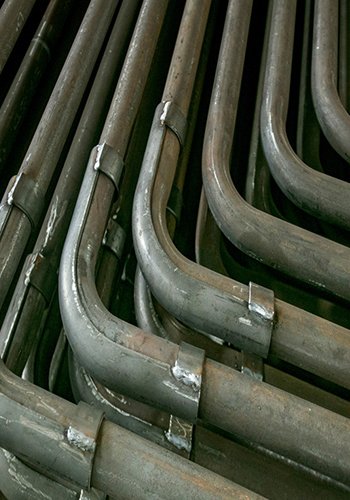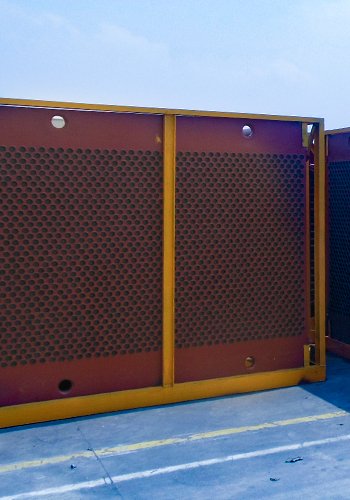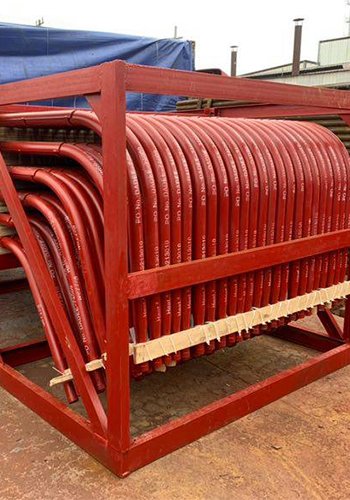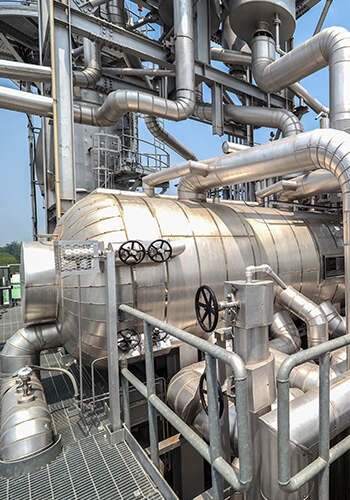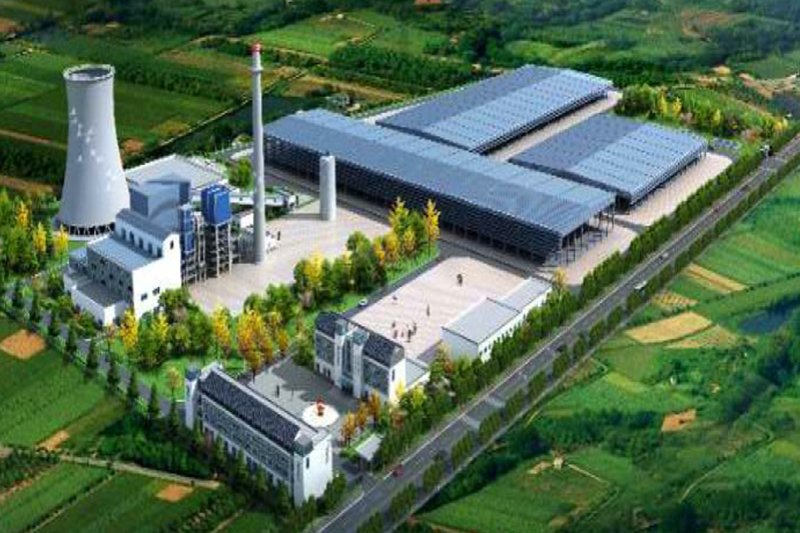China faces a relative shortage of high-quality energy resources with low per capita energy ownership globally. Its manufacturing, led by high-energy-consuming equipment, has hindered industrial economic growth. Achieving higher economic output with less energy is crucial for national transformation, and managing income and expenditure is a top national priority.
Industrial boilers, as high-energy-consuming special equipment, supply steam and hot water for industry and the public, used widely in various fields. They play an important role in the economy and people’s lives. Despite recent achievements in energy conservation, there’s a gap compared to foreign advanced levels due to developing technology and management.
Studying the energy-saving strategies of industrial boilers in a certain area is significant for enhancing energy utilization and reaching the “dual-carbon goals”, as there is still untapped potential for energy savings.
1. Energy Efficiency Status and Energy-saving Potential of Industrial Boilers
1.1 Energy Efficiency Status
According to the simple periodic test method in GB/T 10180 – 2017 “Industrial Boiler Thermal Performance Test Procedure”, researchers have conducted three energy efficiency tests (once every two years) on more than 400 boilers since 2017. During the test, the heat load was carried out according to the actual operating parameters (generally 50% – 95% of the rated load), and the average energy consumption indicators of the three energy efficiency tests of the industrial boilers in this city were obtained, as shown in Table 1.
The data in Table 1 reveals that the thermal efficiency of the industrial boilers in this city is generally low. Most of them fall short of the national requirements for the thermal efficiency limit value of industrial boilers. Specifically, the average thermal efficiency of biomass and fuel oil boilers with a capacity of 6 t/h or less (including) is lower than the limit value.
Analyzing the data in Table 1 further, it can be seen that larger boiler capacity correlates with higher thermal efficiency, with the order being gas boiler > fuel oil boiler > biomass boiler. Additionally, the exhaust gas temperature of biomass boilers is typically higher than that of fuel oil and gas boilers, and the exhaust gas temperature of fuel oil boilers is higher than that of gas boilers. The exhaust gas temperature of biomass boilers with a capacity of 6 t/h or less (including) and fuel oil boilers with a capacity of 4 t/h or less (including) exceeds the standard value. The excess air coefficient of gas boilers is superior to that of fuel oil boilers, while the excess air coefficient of biomass boilers with a capacity of 6 t/h or less (including) and fuel oil boilers with a capacity of 4 t/h or less (including) fails to meet the standard value requirements.
From the data analysis, it is evident that excessive exhaust gas temperature and an overly large excess air coefficient are the primary causes of the low energy efficiency of industrial boilers.
| Boiler Capacity/(t/h) | ≤ 1 | 2 | 4 | 6 | 10 | 20 | >20 | |
| Biomass Boiler | (Thermal Efficiency/Standard Limit)/% | 75.1/83 | 76.1/83 | 78.5/83 | 81.3/83 | 83.6/83 | 86.9/86 | 87.3/86 |
| Exhaust Gas Temperature/°C | 180.2 | 179.3 | 176.5 | 176.2 | 169.5 | 169.2 | 155.3 | |
| Excess Air Coefficient | 1.89 | 1.75 | 1.69 | 1.69 | 1.65 | 1.64 | 1.62 | |
| Fuel Oil Boiler | (Thermal Efficiency/Standard Limit)/% | 83.3/90 | 84.9/90 | 86.4/90 | 89.9/90 | 91.5/9 | —/90 | —/90 |
| Exhaust Gas Temperature/°C | 179.3 | 177.5 | 173.2 | 170.0 | 168.5 | — | — | |
| Excess Air Coefficient | 1.19 | 1.18 | 1.18 | 1.15 | 1.15 | — | — | |
| Gas Boiler | (Thermal Efficiency/Standard Limit)/% | 90.3/92 | 91.2/92 | 92.2/92 | 94.3/92 | 95.9/92 | 96.2/92 | 96.7/92 |
| Exhaust Gas Temperature/°C | 174.5 | 170.6 | 164.3 | 162.2 | 162.1 | 160.3 | 153.5 | |
| Excess Air Coefficient | 1.15 | 1.15 | 1.15 | 1.14 | 1.14 | 1.14 | 1.14 | |
Table 1 Average Energy Efficiency Indicators of Industrial Boilers in a Certain City
Note: a – The standard requirement for exhaust gas temperature is not higher than 170 °C; b – The excess air coefficient of layer-fired biomass boilers is not greater than 1.65, and the excess air coefficient of positive-pressure fuel oil and gas boilers is not greater than 1.15
1.2 Energy-saving Potential Analysis
According to the author’s experience in boiler inspection work management, as of August 2023, there are 398 industrial boilers in use in this city. Biomass boilers make up about 75%, gas boilers 20%, fuel oil boilers 5%, and only 3 coal-fired boilers remain.
The average boiler capacity is around 4 t/h. Those with a capacity less than 20 t/h (including) account for about 95% of the total capacity, and 0.5 – 6 t/h ones account for 80%. The city’s industrial boiler energy consumption is 1.85×105 standard coal, about 1/6 of the industrial comprehensive energy consumption.
The average thermal efficiency of the city’s industrial boilers is 79.31%. In China, it generally ranges from 83% to 90%. If the city’s boilers reach the national average (86%), about 1.56×104 t of standard coal could be saved yearly, and CO2 emissions reduced by 3.89×104, showing great energy conservation and carbon reduction potential.

2. Main Reasons for Low Boiler Energy Efficiency
The reasons for high thermal efficiency in large-capacity boilers are as follows. One aspect is that their heat dissipation specific surface area is small and the blowdown rate is relatively low. Another aspect is that the matching of auxiliary equipment is more reasonable, water treatment facilities are more complete, and most have economizers or energy savers, resulting in higher average thermal efficiency.
The automatic control level of fuel gas boilers is high, with a reasonable smoke-air ratio and sufficient combustion, especially for gas boilers, making their thermal efficiency relatively higher than that of biomass boilers.
From regular boiler inspection results, apart from equipment issues, small-capacity boilers generally have problems like low management level and insufficient maintenance.
Based on the actual analysis of regular boiler inspections, the specific reasons for the low energy efficiency of industrial boilers in this city are summarized as follows.
2.1 Mismatched Boiler Selection
At the energy efficiency test site and during regular inspections, it was found that industrial boilers with a capacity of 6 t/h or less (including) generally don’t operate at full load, and over half are used at less than half load.
When small and medium-sized enterprises select boiler equipment, they mostly focus on price and ignore performance, causing a “large horse pulling a small cart” phenomenon and long-term low-load operation of most boilers.
When designing boilers, thermal, hydrodynamic, and aerodynamic calculations are mainly based on existing experience, referring to Soviet standards or teaching materials for data selection. The heat load is calculated as the maximum, with wide and conservative margins.
Design institutes and users consider future development needs, so the selected boiler capacity and number often exceed the actual demand.
In actual operation, the boiler load fluctuates greatly with steam and heat load changes, resulting in many boilers operating at a low load for a long time.
2.2 Mismatched Boiler Auxiliary Equipment
The pumps and fans in ordinary biomass boilers are mostly general products without adjustment functions, preventing the boiler from adapting to combustion and working condition changes and causing large energy waste.
For old industrial boilers, design and manufacturing emphasize the main body while neglecting auxiliary equipment, resulting in an unreasonable structure, poor combustion adaptability, and problems like fuel leakage, loose seals, poor insulation, ash accumulation, and ineffective adjustment.
The fans, fuels, and feed pumps of fuel gas boilers can be adjusted with the burner, and the smoke – air ratio is reasonable. The burner’s type test controls the excess air coefficient, making fuel gas boilers more efficient than biomass boilers.
Most existing fuel oil boilers in the city are 20 – year – old products. The burner lacked a type test then, and its control level was inferior, so the fuel oil boiler’s excess air coefficient and efficiency during testing were worse than the gas boiler’s.
Thus, the matching of boiler auxiliary equipment is an important factor for industrial boiler energy efficiency.
2.3 Lack of Water Treatment Facilities and Energy Savers
According to water quality tests and regular inspections, only about 60% of around 400 boilers in the city meet the national standard. Many boilers lack water treatment equipment.
Poor water quality causes scaling and reduces efficiency, and may lead to heat transfer problems and accidents like bulging or explosion.
Many old boilers’ economizers and preheaters haven’t been maintained for years, with ash or scale, some deactivated. Small-capacity old boilers mostly lack economizers or energy savers, and have high exhaust gas temperature.
Although recent industrial boilers have energy savers, low technical management and poor maintenance make the energy-saving effect unnoticeable.
2.4 Low Quality of Personnel and Management
Although the State Administration for Market Regulation has issued TSG 91 – 2021 “Boiler Energy-saving and Environmental Protection Technical Regulations” and TSG 08 – 2017 “Special Equipment Use Management Rules”, which put forward a series of requirements for special equipment energy conservation, the special equipment supervision and management department lacks enforcement supervision clauses for high – energy – consuming special equipment energy conservation.
Most using units do not attach importance to boiler energy management. They neither establish a boiler energy – saving management system nor implement the management of boiler energy efficiency technical files.
Moreover, many managers of using units regard boiler operators as low – skill positions. The technical quality of boiler operators is low. They lack necessary energy – saving technology learning and training and even work without a license. This results in some boilers having serious scaling and ash accumulation, some smoke partition walls being damaged causing short – circuit of flue gas, some smoke – air ratios being unreasonable, some furnace arches being damaged causing abnormal furnace temperature or poor mixing of fuel and air, and some boilers having a blowdown rate as high as 20% – 30%, discharging a large amount of heat energy. These are all important reasons for the reduction of boiler thermal efficiency.
3. Energy-saving Strategies
Due to the unreasonable design of auxiliary equipment, etc., old industrial boilers generally do not have energy savers and water treatment facilities, and they account for a large proportion, which is the main reason for the low thermal efficiency of the industrial boilers in this city. It is recommended to adopt cogeneration and centralized heating in industrial concentrated parks, phasing out a large number of small-capacity old boilers; for old boilers in other scattered areas, methods such as installing normal-pressure energy savers and increasing water treatment measures should be adopted to reduce the exhaust gas temperature of the boiler and reduce boiler scaling, improving the thermal efficiency; for old fuel oil boilers, replace the burners with parameters that match and have passed the type test, which can optimize the smoke-air ratio, reduce the exhaust gas temperature, and improve the thermal efficiency. Such energy-saving space will be very considerable.
Conduct economically effective technical transformations on medium and large-capacity biomass boilers, such as installing stratified feeding devices, improving monitoring instruments, transforming control systems, improving grate sealing and air distribution, or using biomass gasification combustion technology to transform medium and large-capacity reciprocating furnaces and chain furnaces; vigorously promote energy-saving products, such as the technology of condensing gas boilers that fully utilize the latent heat of flue gas; at the same time, pay attention to checking the damage of furnace arches and smoke partition walls and repair them in a timely manner; in addition, promote the application of industrial boiler energy-saving monitoring and effect evaluation software, continuously track and monitor energy efficiency parameters, which can achieve the effects of optimizing combustion, regulating water treatment, and reasonable water supply, and can achieve obvious energy-saving effects.
For small and medium-capacity and low-parameter boilers, actively adopt high-efficiency and low-pollution combustion technologies for fuel oil and gas and enhanced heat transfer technologies; accelerate the development of biomass gasification combustion boilers, clean electric heating boilers, and industrial process waste heat boilers to replace some biomass boilers. The energy-saving work of industrial boilers can be promoted from details such as boiler ash cleaning and scaling removal, reasonable blowdown, treatment of leakage, and reuse of boiler condensate heat. With the development of society and the improvement of people’s living standards, the use of domestic waste incineration waste heat boilers has become a hot demand for urban development and a research hotspot for energy conservation and low carbon in recent years.
In view of the current situation that most boilers are operating at a low load for a long time, the operating personnel have poor knowledge of energy conservation and low operating skills, it is necessary to strengthen the training of energy conservation knowledge and operating skills for boiler operating personnel, as well as the training of energy conservation awareness and knowledge for enterprise leaders and energy conservation management personnel. Taking advantage of the revision of the “Special Equipment Safety Law of the People’s Republic of China” and the “Regulations on the Supervision of Special Equipment Safety”, it is called for to improve the enforcement supervision clauses for energy conservation of boilers and other high-energy-consuming special equipment, and improve the supervision efficiency of the special equipment supervision and management department.
In addition to having more comprehensive laws and regulations related to industrial boiler energy conservation, developed countries abroad also formulate economic policies such as fiscal tax incentives and penalties for industrial boiler energy conservation, widely carry out voluntary agreements on industrial boiler energy conservation and environmental protection, and carry out energy efficiency benchmark analysis and comparison activities. For example, Europe has established a boiler efficiency grading system; the United States has carried out high-energy-efficiency boiler labeling and certification represented by “Energy Star”; Japan, the United States, and Germany have established economic subsidy systems for using energy-saving boiler products. The method of arranging funds in finance and implementing preferential policies for energy-saving departments, industries, and products in terms of credit, prices, and taxes is of great significance for promoting and encouraging the development of energy conservation work.
4. Conclusion
China’s per capita resource occupation rate is far lower than the world average level, making energy conservation and emission reduction crucial for sustainable development.
With the intensification of the global energy crisis and environmental pollution, research on energy conservation and emission reduction strategies for high – energy – consuming equipment, especially industrial boilers, is increasingly important.
Increasing income and reducing expenditure, improving efficiency, and being green and low – carbon have become the mainstream of economic development in various countries.
Although China’s industrial boiler energy conservation work has achieved some results with the overall national energy conservation progress, from the perspective of a certain city’s industrial boiler energy efficiency, the energy – saving potential remains unexploited.
Proposing energy – saving strategies suitable for market economy development, considering aspects like energy – saving technology, management level, personnel quality, law enforcement supervision system, and transformation of old and small – capacity boilers, has important reference value for enhancing the energy utilization rate of industrial boilers in a certain area of a certain city and achieving the “dual – carbon goals”.
Author: Zhou Lianhui Deng Jing Hu Weipeng
References
[1] Ma Limei, Shi Dan, Pei Qingbing. China’s Energy Low-carbon Transition (2015 – 2050): Renewable Energy Development and Feasible Paths [J]. China Population, Resources and Environment, 2018, 28(2): 8 – 18.
[2] Gao Yan. Research on the Overall Architecture System of the Industrial Boiler Internet of Things Based on Android [J]. Industrial Heating, 2023, 52(3): 48 – 50, 56.
[3] Li Yunquan, Jiang Zhiming, Zhu Bo, et al. Research on the Problems and Countermeasures of the Development of the Industrial Boiler Energy-saving and Environmental Protection Industry [J]. Instrument Standardization and Metrology, 2022(5): 19 – 21, 34.
[4] Ye Xiangrong. Analysis of the Energy Efficiency Status of Industrial Boilers in Use in Guangzhou during the “13th Five-Year Plan” Period [J]. China Special Equipment Safety, 2021, 37(7): 6 – 10.
[5] Zhou Liming, Xiang Tongqiong, Gan Bing, et al. Analysis of the Rated Energy Efficiency Test Data and Energy-saving Problems of Industrial Boilers [J]. China Special Equipment Safety, 2022, 38(10): 80 – 84.
[6] Da Yaodong, Liu Xuemin, Liu Fengyan, et al. Review of the Energy Conservation and Emission Reduction Work of High-energy-consuming Special Equipment during the “13th Five-Year Plan” of the China Special Inspection Institute [J]. China Special Equipment Safety, 2021, 37(7): 1 – 5, 28.
[7] TSG 91 – 2021 Boiler Energy-saving and Environmental Protection Technical Regulations [S].
[8] Zhang. Analysis of the Necessity of Boiler Energy Efficiency Test [J]. Industrial Boiler, 2021(5): 28 – 31, 36.
[9] Su Wenjuan, Liang Guoan, Ma Xiangdong, et al. Research on the Matching Mode of Boiler Auxiliary Equipment and Matching Suggestions [J]. Boiler Technology, 2021,52(S1): 7 – 10, 19.
[10] Hu Weipeng, Liang Caihang, Jiang Jiande, et al. Research on the Performance of an Acrylic Polymer Boiler Water Treatment Agent [J]. Science and Technology and Engineering, 2016, 16(10): 151 – 154.
